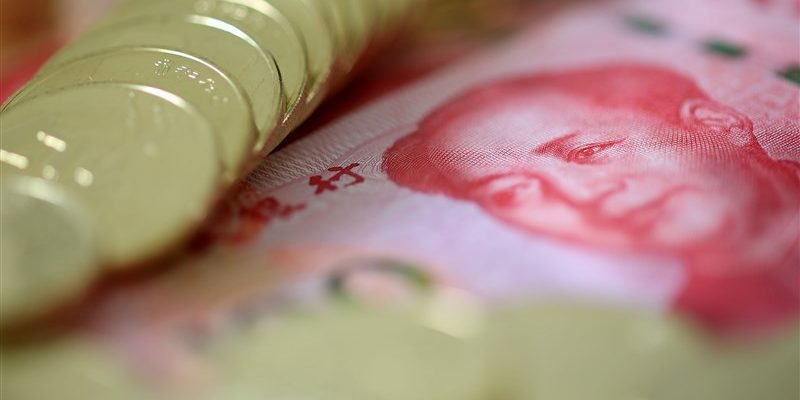2023/6/2 11:18(Updated 6/2 11:36)

Chinese media Yicai.com reported on the 1st that according to official and securities industry statistics, in the first five months of this year, the total amount of bonds issued by local governments reached NT$15 trillion, an increase of 6.6% over the same period last year. The picture shows RMB. (China News Agency)
(Central News Agency, Taipei, 2nd) The Chinese media Yicai.com.cn reported on the 1st that according to official and securities industry statistics, in the first five months of this year, the total amount of bonds issued by local governments reached RMB 3.5 trillion (approximately NT$). 15 trillion), an increase of 6.6% over the same period last year.
According to the report, the maturity of local government bonds in China has been significantly extended in recent years. According to data from the Ministry of Finance, as of the end of April 2023, the average remaining maturity of local government bonds is 8.8 years, compared with 4.4 years in 2018.
In addition, based on the consideration of stabilizing investment and repaying old debts, the scale of local debts exceeded the same period last year.
According to data from Essence Securities Research Center and the Ministry of Finance, in the first five months of this year, local governments issued a total of about 3.5 trillion yuan in bonds, an increase of about 6.6% over the same period last year, and nearly 2.26 trillion yuan in new bonds. 7.8%, but refinancing bonds issued about 1.28 trillion yuan, an increase of about 47%.
The report pointed out that it is not difficult to find that since the beginning of this year, local governments have raised money through refinancing bonds, and refinancing bonds have always been used to repay the principal of due debts, that is, “borrowing new to repay old.”
According to the report, this year is the peak period for the bond repayment of local governments in China, and the expected repayment amount at maturity is about 3.65 trillion yuan.
The report pointed out that China has been hit by the epidemic in recent years, the economy has been weak, coupled with tax cuts and fee reductions and a downturn in the real estate market, which has severely damaged local fiscal revenue, so that repaying such a huge debt still has to rely on the issuance of refinancing bonds to repay old debts.
According to data from Essence Securities Research Center, the issuance scale of local bonds in five provinces exceeded 200 billion yuan from January to May this year, followed by Guangdong, Shandong, Jiangsu, Sichuan and Hebei.
According to the report, compared with the same period last year, the bond issuance scale of the above five provinces has increased significantly, showing that not only financially distressed provinces and cities in China have borrowed bonds to raise funds, but now economically developed provinces and cities have to increase the amount of bond issuance to cope with difficulties.
Especially since the remaining new bond quota has been allocated to various provinces and cities, the market expects that June will enter a new round of local bond issuance peak.
Chi Guangsheng, chief fixed income analyst at Essence Securities, estimates that the issuance scale of local government bonds in June will reach about 1.10 billion yuan, and the bond issuance scale in the third and fourth quarters will be about 2.26 trillion yuan and 950 billion yuan respectively.
In addition, according to the local financial development report released by Renmin University of China in January this year, due to the impact of the COVID-19 (coronavirus disease 2019) epidemic, the growth rate of debt in China’s provinces far exceeded that of income last year, and the growth rate of debt in each province significantly exceeded GDP and income. The debt burden increased.
The report and expounds the crisis facing local finance, including the deterioration of the fiscal revenue structure in the past two years, and the uneven financial resources among regions; while the income growth is weak, the demand for rigid expenditures is expanding, and the contradiction between fiscal revenue and expenditure is becoming increasingly prominent; Borrowing increased rapidly.
NetEase’s “Huixiang Encyclopedia” reported on April 11 as an example. Last year, a total of 7 cities had financial deficits of more than 100 billion yuan, including Harbin with approximately 121.9 billion yuan, Shanghai with 105.6 billion yuan, Beijing with 129.2 billion yuan, Tianjin with 122.8 billion yuan, Guangzhou 119.2 billion yuan, Wuhan 117.7 billion yuan. (Editor: Cao Yufan/Lv Jiarong) 1120602
Central News Agency “first-hand news” app
The text, pictures, and audio and video on this website may not be reproduced, publicly broadcast, or publicly transmitted and utilized without authorization.







